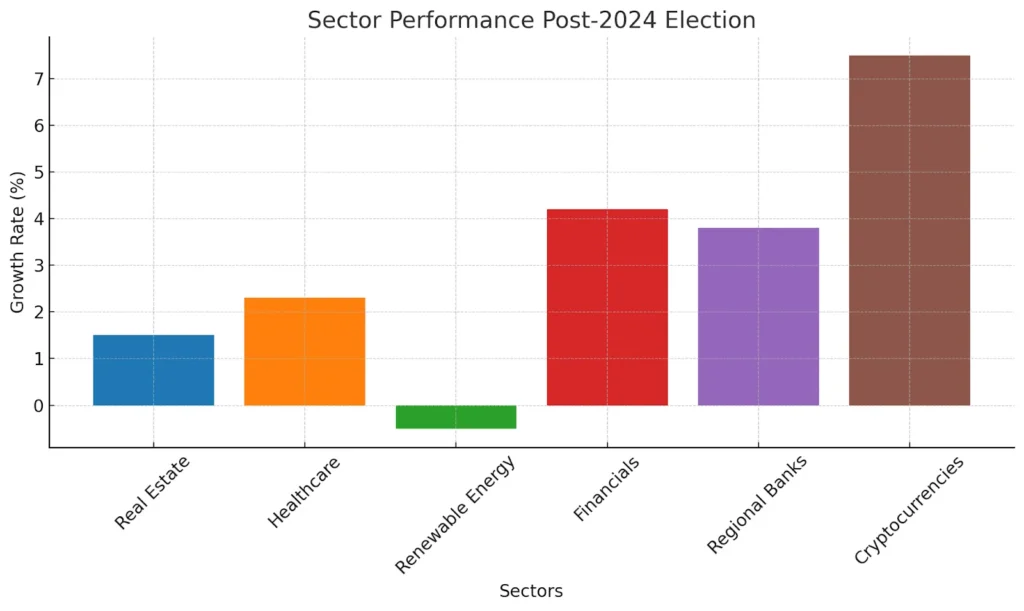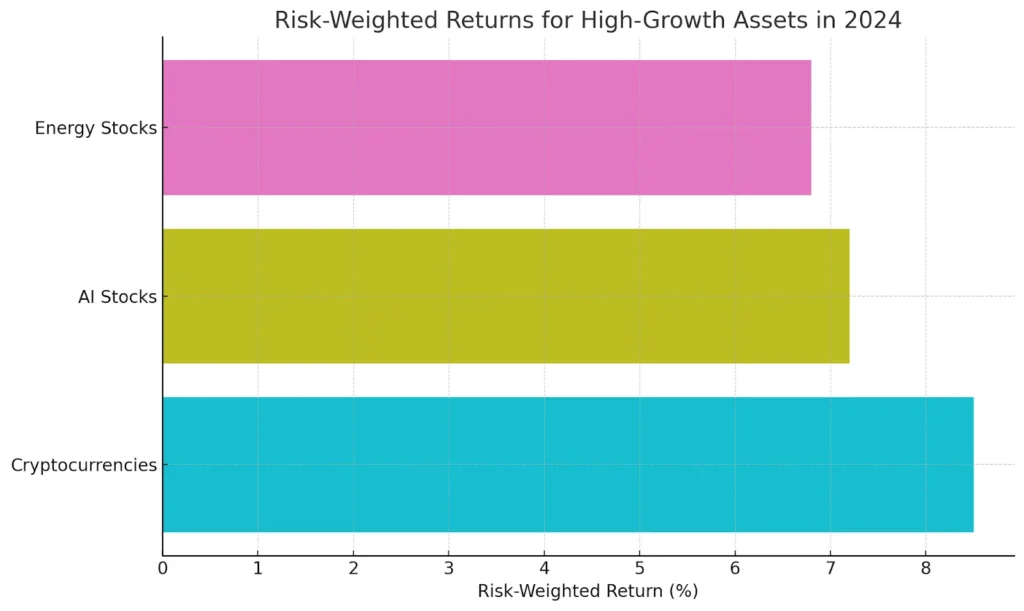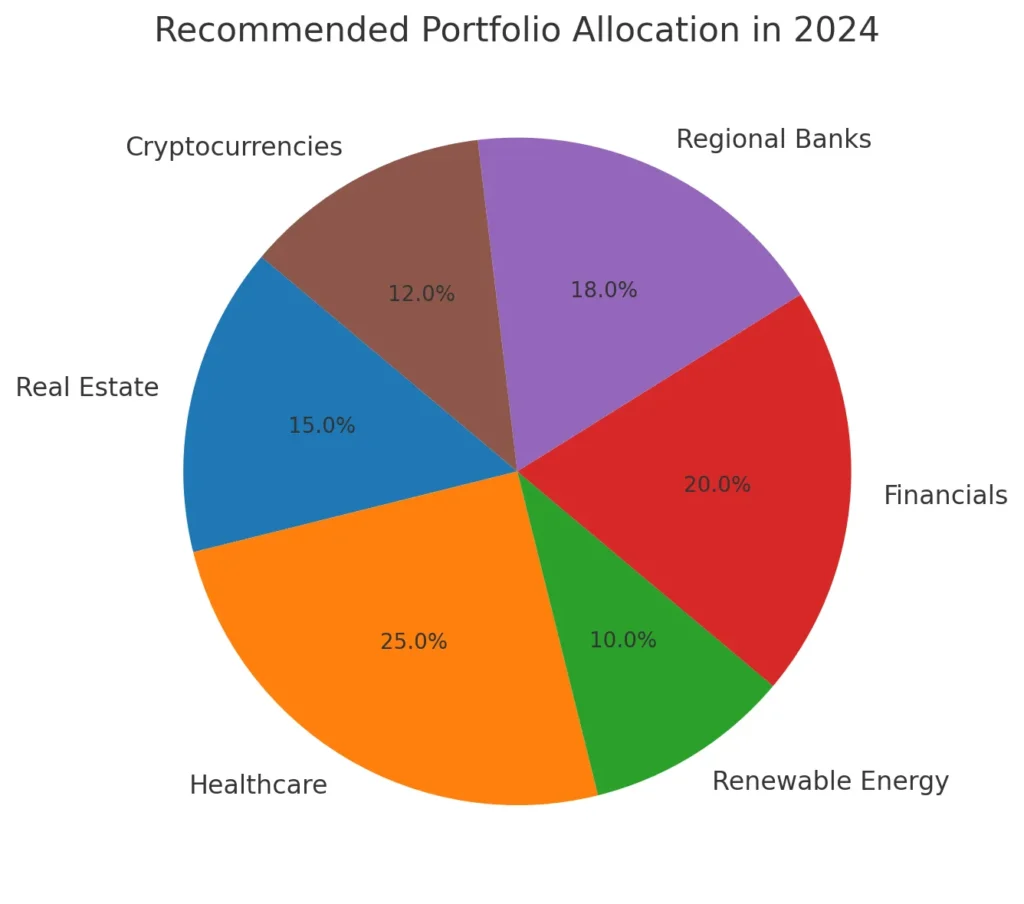Market Trends After 2024 Election : The 2024 election results have brought renewed focus to the stock market and the economy. Investors are assessing how changes in policies might affect different sectors, asset classes, and overall market performance. This article provides an in-depth look at the post-election market dynamics, exploring sectoral impacts, portfolio strategies, and the investment themes that may shape the financial landscape under the new administration.
- Double-Digit Returns: Real Estate vs. Stock Market vs Property Investment – Which Investment Reigns Supreme?
- GameStop Stock: Soaring Margins and $4B Cash Fuel All-Time High?
- Best PSU Stocks 2024 After Budget 2024: Uncover the Top PSU Stocks Set to Soar After Budget Announcements
- How to Make Money When Stocks Crash: A Simple Guide to Call Credit Spreads

Understanding Market Trends After 2024 Election
Investors are showing renewed interest in growth stocks and crypto assets, betting on a favorable policy environment that may benefit these sectors. However, it’s important to recognize that not every sector is benefiting equally. Let’s take a closer look at how this risk-on sentiment is impacting various areas of the market.
Sector-Specific Impacts and Strategic Investment Opportunities
Different sectors respond uniquely to policy changes, interest rate expectations, and broader economic trends. Here’s how the current environment is affecting key sectors:
1. Interest Rate-Sensitive Sectors
Interest rate-sensitive sectors, including real estate, healthcare, and renewable energy, are currently facing challenges. Rising interest rates can increase borrowing costs, which in turn can weigh heavily on sectors reliant on debt or long-term investment horizons.
Real Estate: Higher borrowing costs may slow down commercial and residential property growth, impacting real estate stocks.
2. Financials and Regional Banks
Regional banks have shown strength in the post-election environment, partly due to investor optimism about regulatory easing. Financial institutions are benefiting from expectations of favorable tax policies and deregulation, which could increase profitability. Investors are particularly interested in financials as they stand to gain from higher interest rates and economic growth.
3. Cryptocurrencies
Bitcoin and other digital currencies are seen as alternative assets, often viewed as a hedge against inflation. Increased institutional adoption and investor interest in decentralized finance (DeFi) have driven cryptocurrencies to new highs. The digital asset space continues to gain traction as a hedge against inflationary pressures, making it an area worth considering for diversification.

The Role of Artificial Intelligence in Shaping Market Trends
Analysts suggest that a “hands-off” approach to AI regulation will encourage growth in AI infrastructure, especially data centers and utility services supporting AI’s massive power demands. This trend is expected to continue, creating investment opportunities in companies providing the hardware, software, and data processing capabilities for AI advancements.

Energy Sector: Navigating Domestic and International Policy Impacts
The energy sector remains pivotal, with its performance closely tied to domestic policies and international relations. Here’s a breakdown of how energy policies may shape investment opportunities:
- Domestic Energy Production: Increased domestic energy production may drive supply, impacting energy prices. The focus on “energy independence” has sparked optimism around U.S. energy companies, though price pressures remain a consideration.
- Foreign Policy: International dynamics, particularly with energy-exporting countries, play a significant role in shaping global energy supply and pricing. Tensions or agreements with nations like Russia can impact Western Europe’s energy access, adding another layer of complexity to the global energy market.
| Energy Sector Themes | Potential Impacts |
| Increased Domestic Production | Higher supply, potential downward price pressure |
| Foreign Policy Dynamics | Supply chain stability, pricing shifts |
| Inflation and Commodity Prices | Commodities may benefit in inflationary environments |
Portfolio Strategies for a Post-Election Market
Amidst these evolving trends, investors can adopt several strategies to manage risk and capitalize on emerging opportunities:

- Diversify Internationally: U.S.-centric portfolios have performed well, but the emphasis on international diversification is growing. Diversifying can mitigate risk and provide exposure to high-growth markets globally.
- Adjust Fixed Income Holdings: Interest rate-sensitive fixed income investments may be affected by rising rates. Short-duration bonds may offer a safer alternative in this environment, providing income while minimizing interest rate risk.
- Maintain a Balanced Allocation: While the market is favoring risk-on assets, it’s prudent to maintain a balanced allocation. A well-diversified portfolio that includes equities, fixed income, and alternative assets can help manage volatility and achieve long-term goals.

Understanding Fixed Income in a Shifting Market
Fixed income remains an essential component of a balanced portfolio, especially in uncertain environments. The focus on shorter-duration bonds, such as short-term Treasuries, reflects investor caution toward potential interest rate increases. Here are some trends in the fixed income space:

- Short-Term Treasuries: With yields rising, shorter-duration bonds offer more stability in a volatile environment.
- Municipal Bonds: Municipal bonds remain popular, though investors are cautious due to potential tax policy changes that could affect their tax-exempt status.
- High-Yield Bonds: The high-yield sector has performed well, benefiting from the risk-on environment. However, due to higher risks associated with credit quality, investors should approach high-yield bonds with selectivity.
| Fixed Income Strategy | Considerations |
| Short-Term Treasuries | Stability amidst rate increases |
| Municipal Bonds | Watch for potential tax changes |
| High-Yield Bonds | Caution with credit risk |
Key Takeaways for Investors in 2024
As we move forward in 2024, here are some actionable insights for investors:
- Stay Diversified: Diversification remains critical, as it reduces reliance on any single asset class.
- Monitor Policy Changes: Keep an eye on potential policy changes affecting tax, tariff, and regulatory landscapes.
- Consider Alternative Assets: Assets like commodities and cryptocurrencies may offer a hedge against inflationary pressures.
Conclusion: Navigating the Market Trends After 2024 Election
The post-election environment in 2024 presents both opportunities and challenges. By staying informed and adopting a diversified investment approach, investors can better navigate potential market shifts. From assessing sectoral impacts to fine-tuning portfolio allocations, staying proactive in adapting to the changing economic landscape will be key to long-term success.
- Is the Stock Market Rigged? GameStop Exposes the Big Stock Market Scam
- Apple Stock Buy in Market Dip: Is This the Right Time to Invest?
- Hindenburg Strikes Again! Is SEBI’s Chief Compromised? | Indian stock market Will Crash, Your Loss Sure?
- Is the Stock Market Rigged? GameStop Exposes the Big Stock Market Scam
FAQ Related To Market Trends After 2024 Election
Post-election policies impact stock markets by influencing investor confidence, corporate profitability, and economic growth expectations. These factors can drive or dampen market performance depending on the sector.
Sectors like real estate, utilities, and healthcare are particularly sensitive to interest rate changes. Rising rates can increase borrowing costs and impact profitability, leading to potential volatility in these sectors.
Cryptocurrencies can serve as an alternative asset in a diversified portfolio, providing potential returns and acting as a hedge against inflation. However, they come with high volatility and should be allocated cautiously within an investment strategy.









